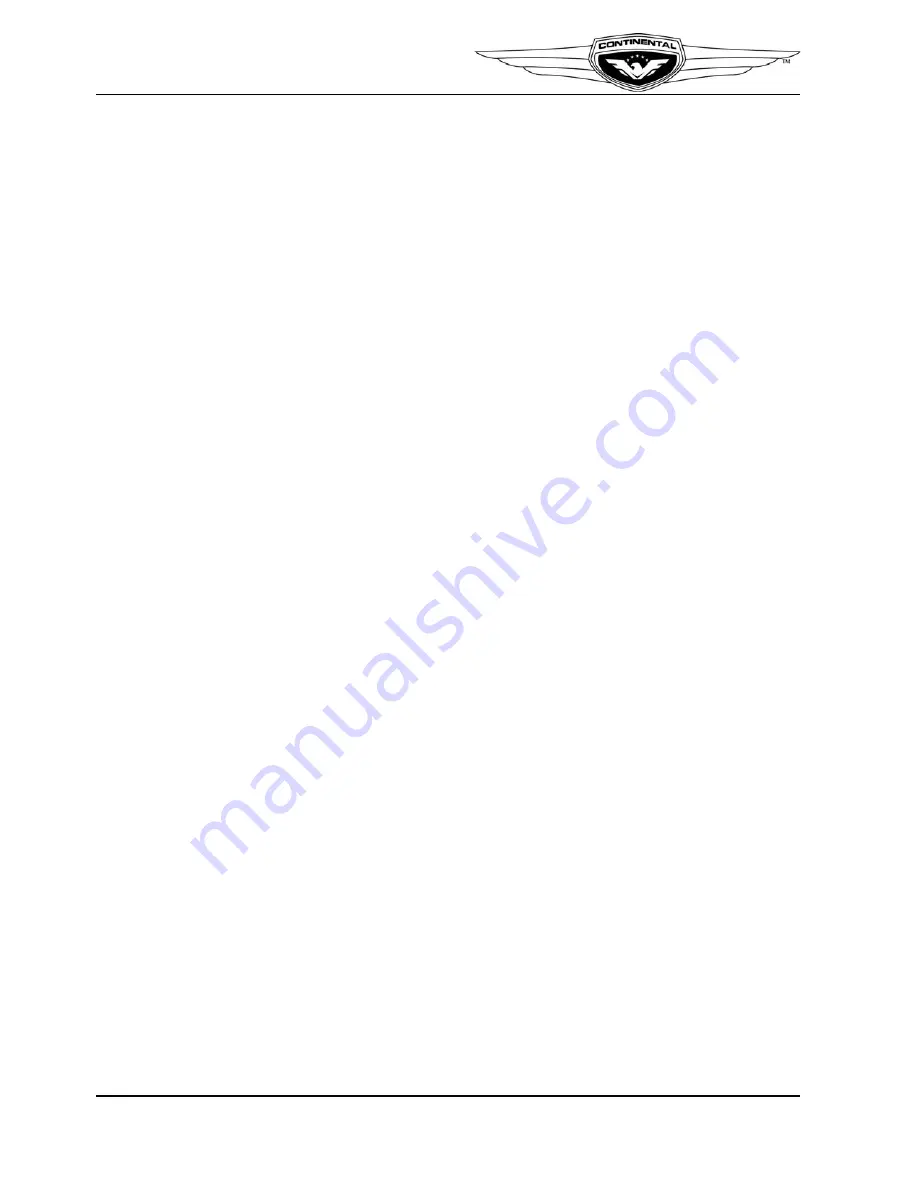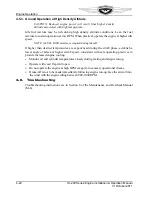
4-26
IO-240 Series Engine Installation & Operation Manual
31 October 2011
Engine Operation
4-5.2. Engine Operation in Hot Weather
“Hot weather” is defined as ambient temperature exceeding 90° F (32° C). After an engine
is shutdown, the temperature of various components will begin to stabilize. The hotter
parts such as cylinders and oil will cool, while other parts will begin to heat up due to lack
of air flow or heat convection from those engine parts that are cooling. At some point
following engine shutdown, the entire unit will stabilize near the ambient temperature.
This time period will be determined by temperature and wind conditions and may take
several hours.
Heat soaking occurs between 30 minutes to one hour following shutdown. During this
time, the fuel system will warm causing the fuel in the pump and fuel lines to “boil” or
vaporize. During subsequent starting attempts, the fuel pump will initially be pumping a
combination of fuel and fuel vapor. At the same time, the fuel lines will be filled with
varying amounts of fuel and vapor. Until the entire fuel system becomes filled with liquid
fuel, difficult starting and unstable engine operation can be expected.
Three hot weather operation situations requiring special instructions are:
•
“Cooling an Engine in Hot Weather” (Section 4-5.2.1)
•
“Engine Restart in Hot Weather” (Section 4-5.2.2)
•
“Take-off and Initial Climb Out in Hot Weather” (Section 4-5.2.4)
Ensure the engine is serviced with the correct viscosity oil specified in Section 3-2.1
“Engine Oil Specifications” in the Maintenance and Overhaul Manual (M-6) prior to
starting the engine. In the event of temporary cold weather exposure, store the aircraft in a
hangar between flights. Service the oil sump, as required, to maintain the oil capacity
specified for the engine model in Section 2-3, “Engine Specifications and Operating
Limits” according to the “Engine Oil Servicing” instructions in Section 6-3.8 in the
Maintenance and Overhaul Manual (M-6).
Operating Tips
•
Inspect the induction air filter frequently for contamination; be prepared to clean or
replace it, if necessary.
•
If the aircraft is flown in dusty conditions, we recommend more frequent oil changes.
•
Use dust covers over openings in the cowling for additional protection.
4-5.2.1. Cooling an Engine in Hot Weather
•
Reduce ground operation to a minimum to keep engine temperatures down.
•
Open cowl flaps fully while taxiing.
•
Face the nose of aircraft into the wind to take advantage of the cooling effect.
Содержание IO-240-A
Страница 145: ......
Страница 146: ...www continentalmotors aero ...
















































